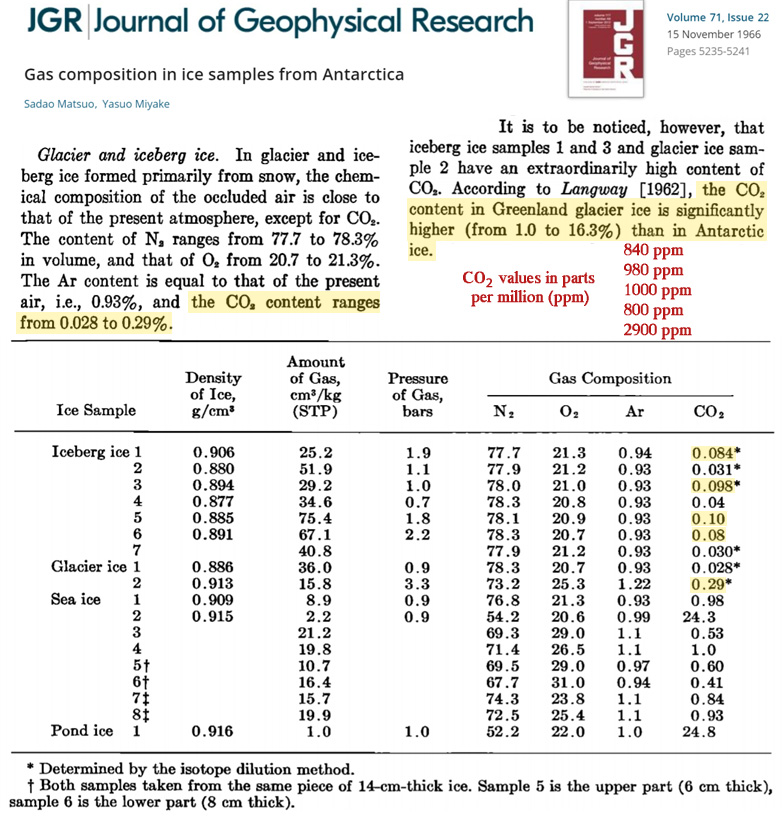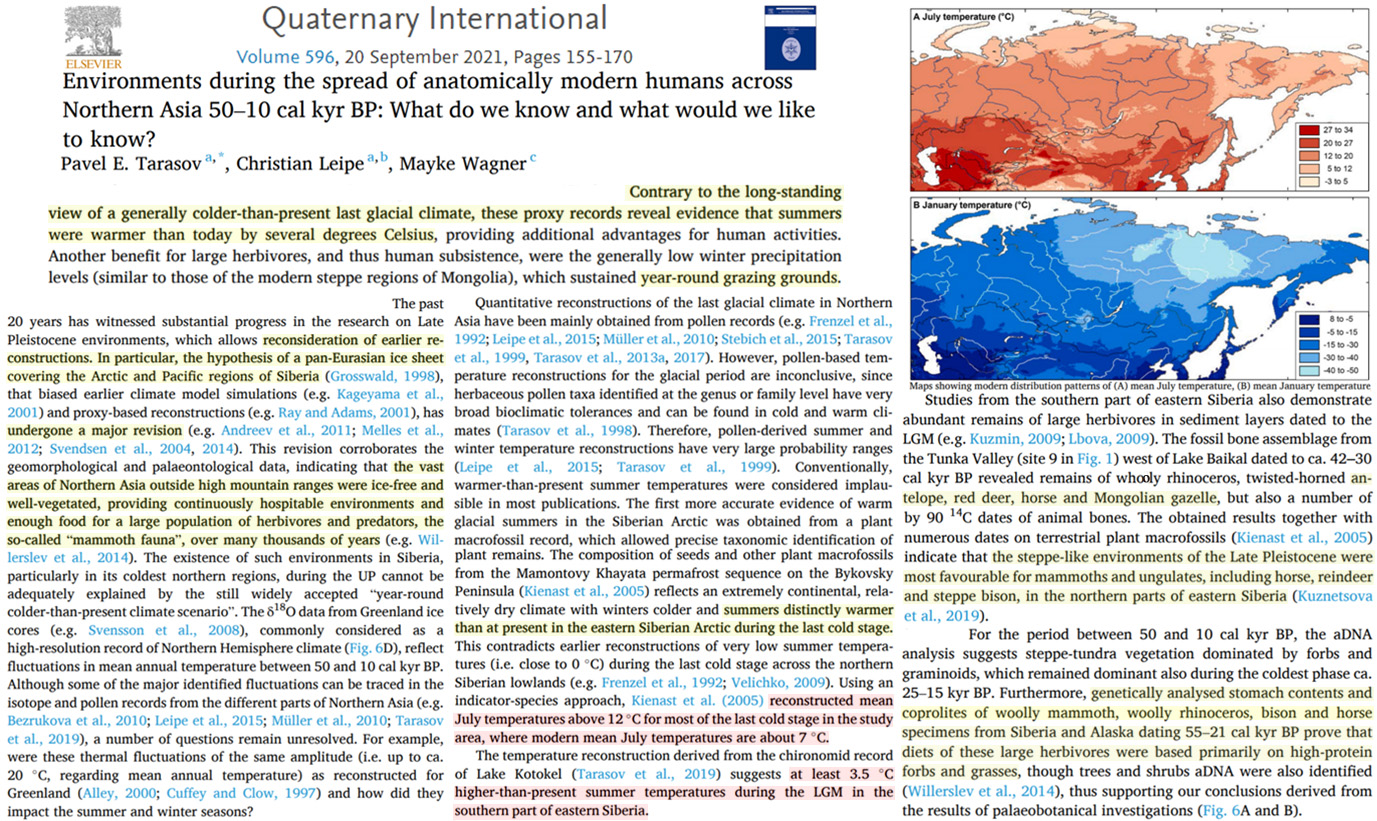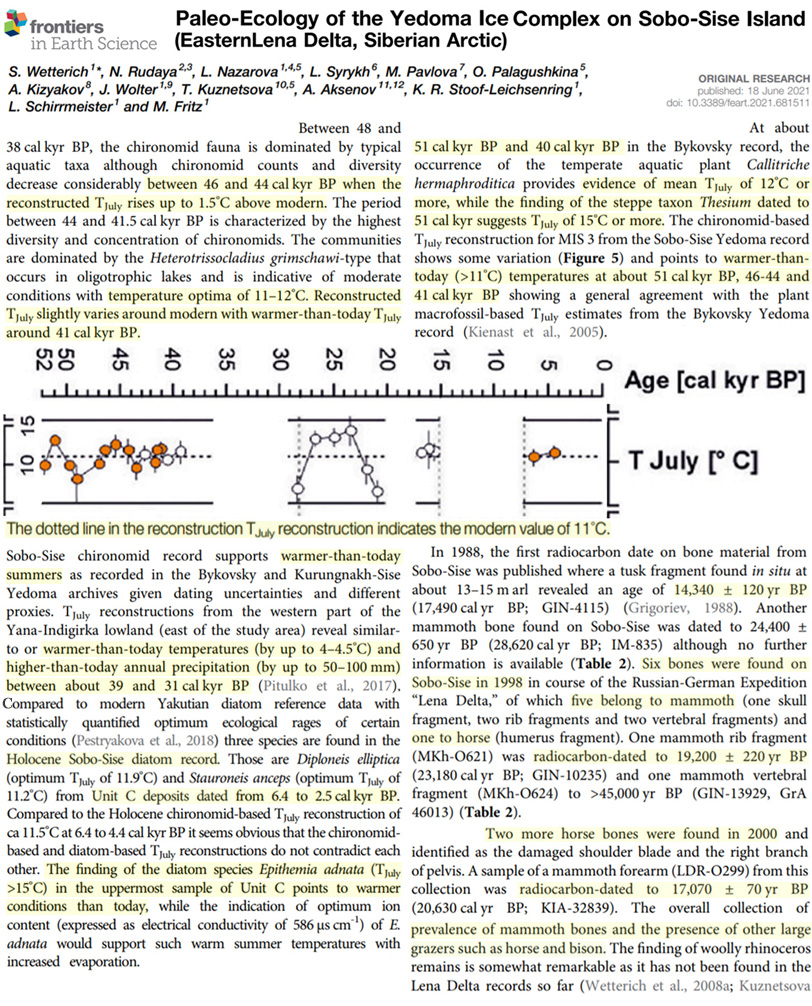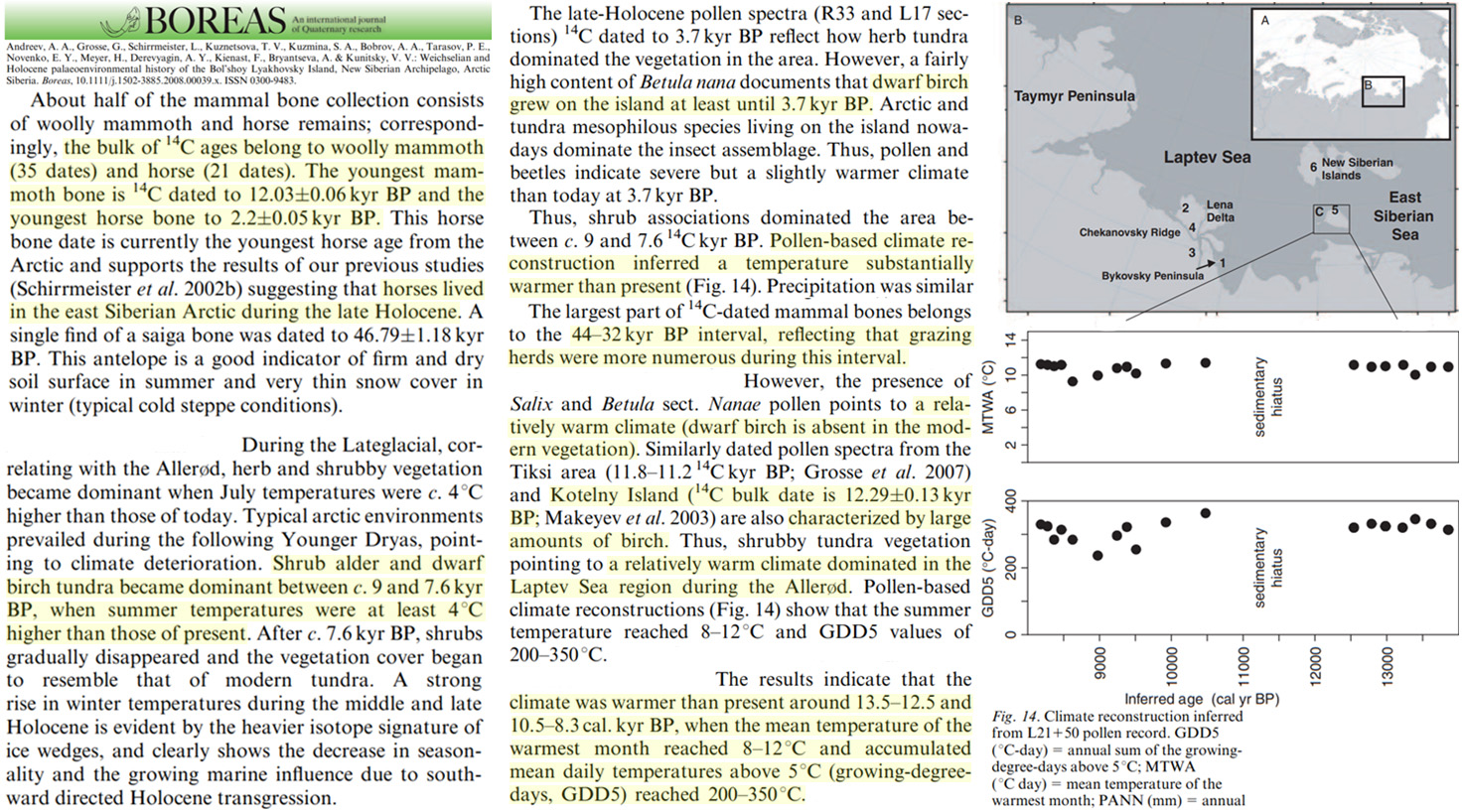Independent analyses from multiple independent sources indicate Arctic Siberia was 3 to 5°C warmer than today during the peak of the last glacial, or when CO2 levels were below 200 ppm.
Measurements from Antarctica’s ice sheet are almost invariably used to characterize both the global-scale atmospheric CO2 levels and climate for the last 10s to 100s of thousands of years.
But it is rather odd that Antarctica’s climate is considered globally representative (i.e., “global warming”) since there has been no warming here for the last seven decades.
Further, ice samples from Antarctica have CO2 values that range between 900 and 2900 ppm (Matsuo and Miyake, 1966) for the modern period (i.e., the 1960s). These values are far outside the range of the accepted modern global atmospheric values (~300 to 400 ppm).

Image Source: Matsuo and Miyake, 1966
If Antarctica doesn’t accurately record the modern CO2 values and climate trends, why should Antarctica’s paleoclimate history be regarded as globally representative?
Siberian Arctic was much warmer than today throughout the last glacial
Vegetation and tree records with specific warmth thresholds and associated ice-free temperature requirements affirm the Siberian Arctic climate needed to be “warmer than today by several degrees Celsius” about 25,000 to 18,000 years ago, or during the peak of the last glacial (Tarasov et al., 2021). This was a period when CO2 levels are said to have hovered around 180 ppm.
Scientists document ~5°C warmer glacial climates (July) than today throughout Northern Asia during these millennia:
“…reconstructed mean July temperatures above 12°C for most of the last cold stage [glacial] in the study area [throughout Northern Asia], where modern mean July temperatures are about 7°C”.
The widespread presence of grazing mammoths, horses, bison, deer, antelope, gazelle…in Siberia and Alaska and well north of the Arctic circle imply “year-round grazing grounds.” This requires warmer temperatures and more pervasive ice-free grass-grazing ranges than exist today.

Image Source: Tarasov et al., 2021
Other scientists document a Siberian Arctic with “warmer-than-today temperatures (by up to 4 – 4.5°C)…between about 39 and 31 cal kyr BP” (Wetterich et al., 2021), or, again, when CO2 levels were alleged to have been in the low 200s ppm range.

Image Source: Wetterich et al., 2021
Grass grew 300-350 days a year in the late stages of the last glacial in the Siberian Arctic. As mentioned above, this allowed horses, antelopes, and other large grazers (mammoths) to continuously reside at these high latitudes (Andreev et al., 2008).
Horses were grazing on Arctic grass year-round until as recently as 2,200 years ago. Today these regions have tundra climates. Grazers can no longer survive in the modern colder-than-the-last-late-glacial conditions.
The Siberian Arctic also had extensive birch forests 14,000 to 12,000 years ago. Birch trees were still growing in this region as late as ~3,700 years ago. Today these same regions are too cold for birch trees to grow.
Image Source: Andreev et al., 2008
Why is it assumed we can obtain accurate global-scale records of past climates from Antarctica when there is such a stark divergence in the timing and amplitude of Antarctica’s climate trends versus Arctic Siberia’s?





[…] From NoTricksZone […]
Because if it’s going up, it’s global climate. If it’s going down, it’s local weather.
“Why is it assumed . . .”
Climate Cult™ members use what works for them and ignores what doesn’t.
Activists and media types “assume” the CC™ folks present settled science and anything else is disinformation.
[…] Why Is Antarctica’s Climate Considered ‘Global’ But Arctic Siberia’s Is Not? […]